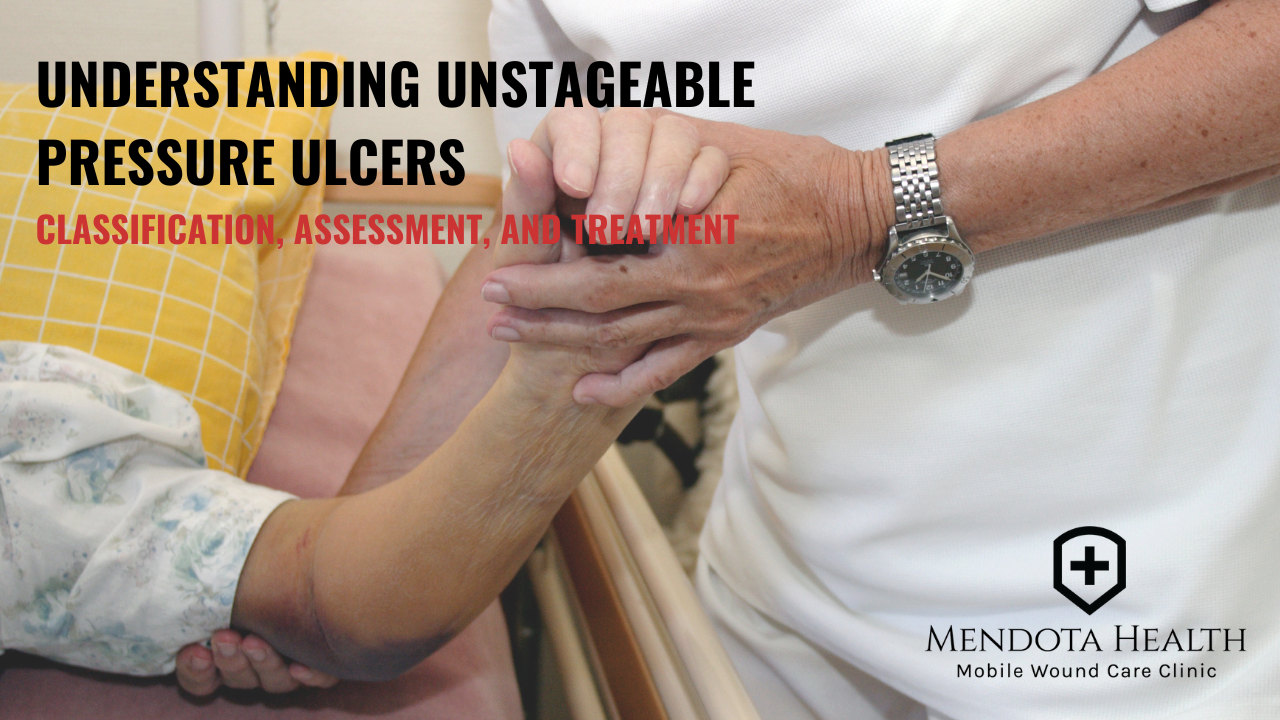
02 Oct Understanding Unstageable Pressure Ulcers
Classification, Assessment, and Treatment
Pressure ulcers, are a common concern in healthcare settings, especially among patients with limited mobility or those confined to bed for extended periods.
Among the various classifications of pressure ulcers, “unstageable” ulcers pose a unique challenge for healthcare professionals.
debridement
Debridement is used to manage unstageable pressure ulcers by removing slough and eschar, which obscures the wound bed. Debridement can be accomplished through various methods:
- Sharp Debridement: This involves the surgical removal of non-viable tissue using sterile instruments, such as scalpels or scissors. It is often performed by healthcare professionals with expertise in wound care.
- Enzymatic Debridement: Enzymatic agents like collagenase or protease enzymes may be applied to the wound to break down the necrotic tissue gradually.
- Autolytic Debridement: Encouraging the body’s natural processes to break down dead tissue by maintaining a moist wound environment with dressings like hydrocolloids or hydrogels.
- Mechanical Debridement: This method involves using a wet-to-dry dressing technique where a moist dressing is applied to the wound and then removed when it dries, taking non-viable tissue with it.
infection control
Infection Control: Unstageable pressure ulcers are at risk of infection due to the presence of dead tissue. Managing infection is crucial for effective wound healing. Steps for infection control include:
- Wound culture to identify specific pathogens.
- Systemic antibiotics, if indicated by culture results.
- Frequent wound cleansing with sterile saline or an appropriate wound cleanser.
- Maintaining a clean and sterile environment during dressing changes.
addressing underlying causes
Treating the pressure ulcer effectively involves addressing the root causes to prevent further tissue damage and recurrence. Key considerations include:
- Pressure relief: Repositioning the patient regularly, using pressure-reducing mattresses or cushions, and implementing care plans to minimize prolonged pressure on vulnerable areas.
- Nutrition: Ensuring the patient receives adequate nutrition, including protein and vitamins, to support tissue repair and wound healing.
- Mobility: Encouraging patient mobility or implementing appropriate range-of-motion exercises when mobility is limited.
- Management of comorbidities: Addressing conditions like diabetes or vascular disease that can impair wound healing.
Continual Assessment
Continual assessment of the wound’s progress is essential. Document changes in the wound’s appearance, size, and characteristics during each dressing change. When the wound bed becomes visible, it can be accurately staged and managed accordingly.
patient education
Educate the patient and their caregivers about wound care, nutrition, and preventive measures to minimize the risk of future pressure ulcers.
conclusion
Treating unstageable pressure ulcers is a complex process that requires a multidisciplinary approach. Effective debridement, infection control, addressing underlying causes, and the use of appropriate wound dressings are key components of successful management. Regular monitoring and patient education are essential for achieving optimal outcomes and preventing further complications. Collaboration among healthcare professionals, including wound care specialists, nurses, and physicians, is crucial in managing unstageable pressure ulcers effectively.

